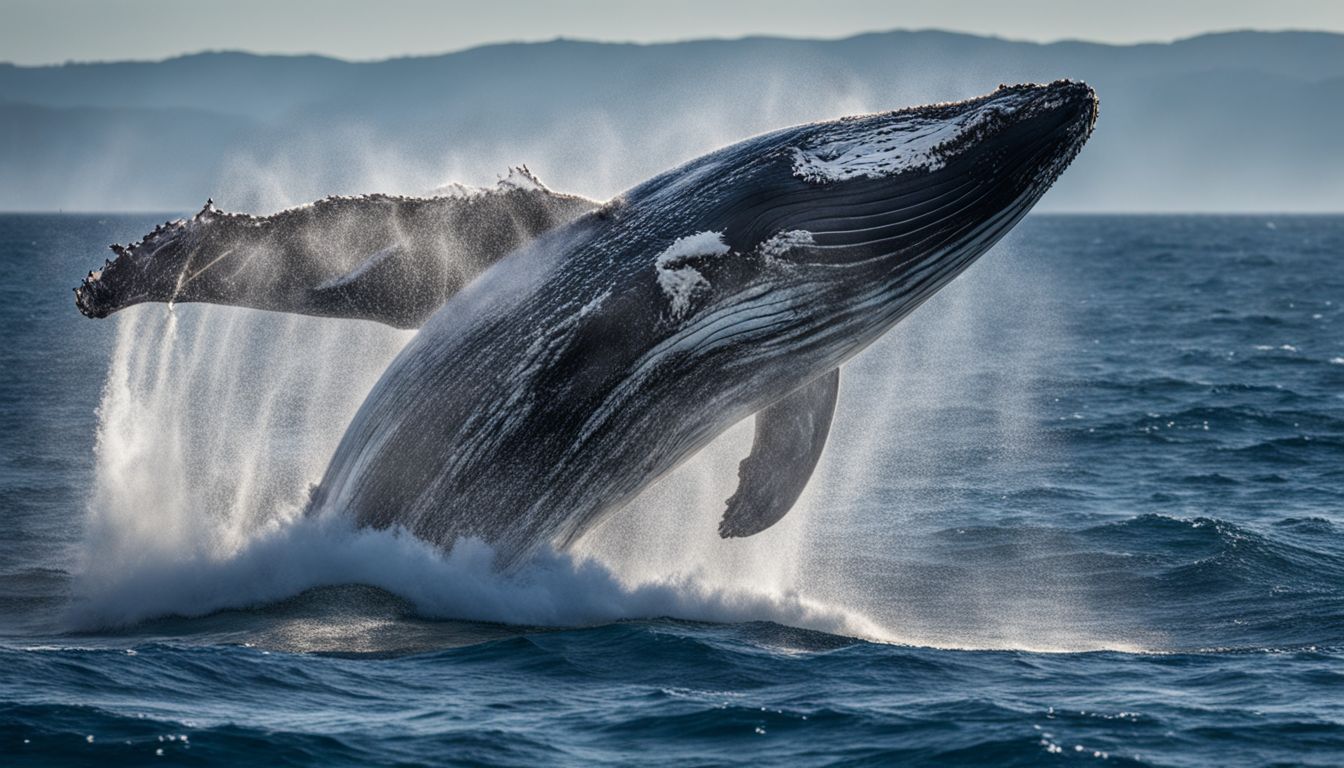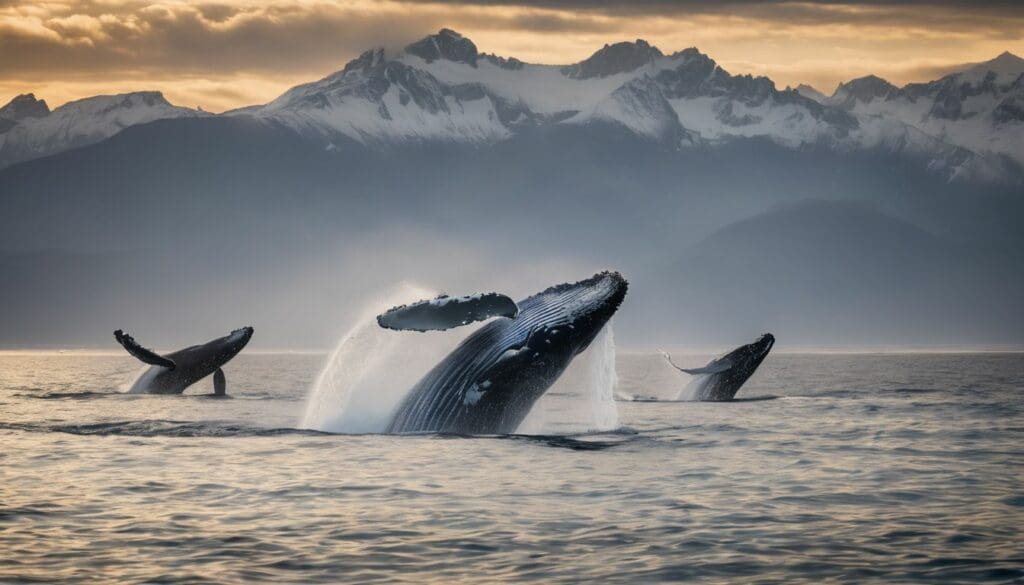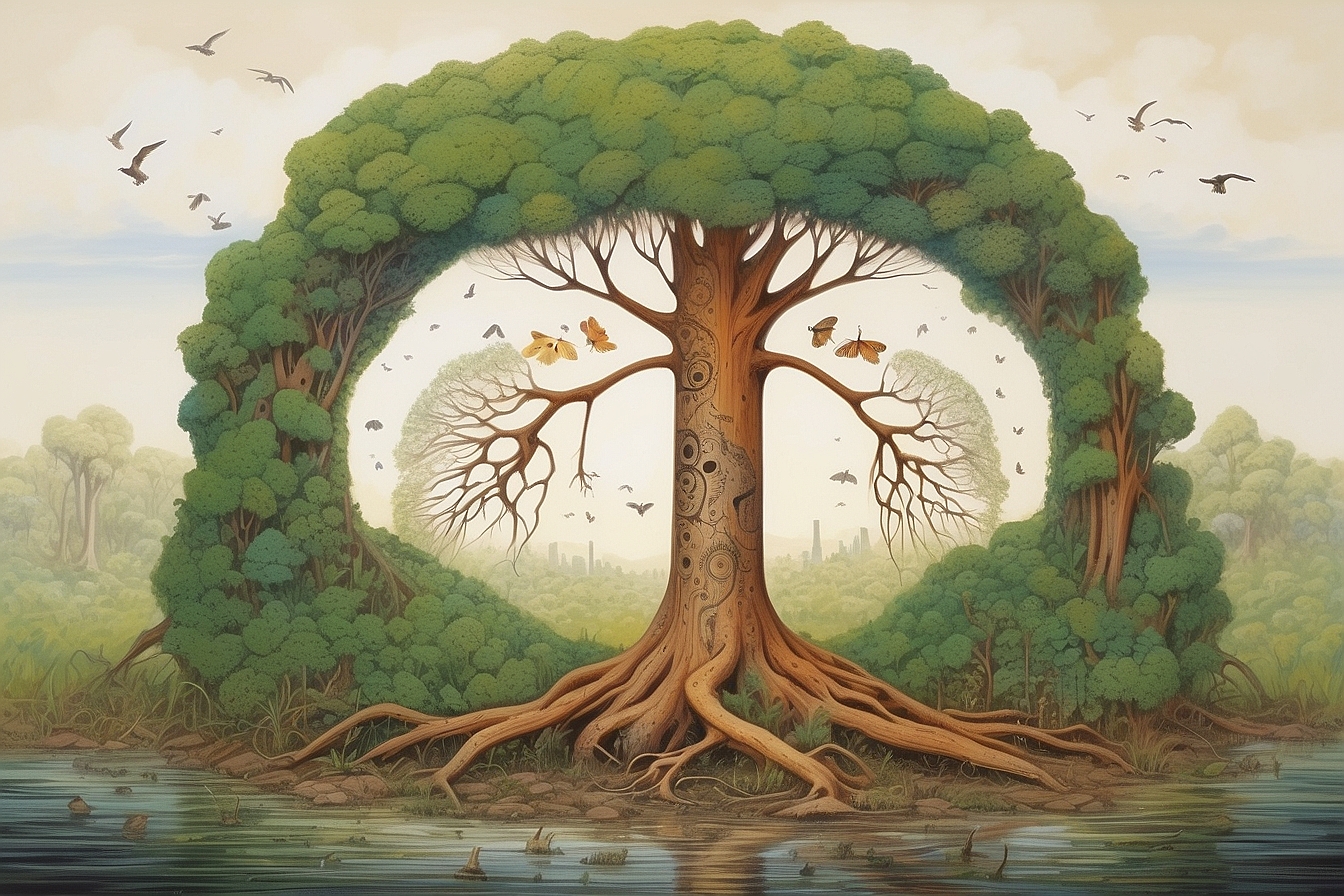Many of us find ourselves utterly captivated by the thought of the majestic giants dwelling beneath the waves, especially when we contemplate their monumental travels across Earth’s expansive oceans.
We share this fascination with you and, in a spirit of shared discovery, have probed into the mysterious odyssey of whale migration to unveil some truly remarkable findings. For instance, isn’t it simply astounding that a humpback whale can embark on an annual migration spanning up to 25,000 kilometres? Our article is rich with insights about these awe-inspiring journeys and sheds light on their vital role within marine ecosystems.
So why not plunge into our narrative as we chart the pathways of these gentle titans in their oceanic kingdom—carry on reading for more!
Key Takeaways
- Humpback whales undertake yearly migrations that can reach up to 25,000 kilometres, moving from polar feeding areas to tropical breeding grounds.
- Scientists use satellite tags to map whale migration routes, providing critical data for conservation efforts and the establishment of marine protected areas.
- Whales contribute significantly to ocean ecosystems by fertilising them with essential nutrients through their waste, which promotes the growth of phytoplankton and supports diverse marine life.
- Climate change is altering traditional migratory patterns and exposing whales to new challenges such as longer journeys, less food availability, increased predation risks, and habitat changes due to melting ice.
- Human activities like shipping traffic increase the dangers for migrating whales through potential collisions and noise pollution; these threats necessitate vigilant monitoring and protective measures.
Understanding Whale Migration Patterns

In exploring the intricate world beneath the waves, we delve into the captivating odysseys of these ocean giants, tracing their paths across vast marine expanses. With each stroke and fluke glide, whales inscribe a story of survival and grace in the planet’s blue depths.
The majestic journey of Humpback Whales
Every year, humpback whales embark on one of the most extensive migrations of any marine mammal. Travelling vast distances from their polar feeding waters to warmer tropical breeding grounds, these ocean giants cover up to 25,000 kilometers annually.
We watch in awe as they move through blue corridors, performing acrobatic breaches and powerful fluke displays along their route. Their journey is not just a spectacle; it’s vital for their survival and successful reproduction.
Humpbacks rely on marine protected areas to rest and feed without human disturbance. As we push for more conservation efforts and the expansion of these sanctuaries, our goal is crystal clear: safeguard the routes that are crucial for the continuance of this awe-inspiring migratory species.
Let’s turn our attention now to ‘Mapping Whale Superhighways’, where satellite tags reveal secrets about whale travel paths that might save them from potential threats like ship strikes and underwater noise pollution.
Mapping Whale Superhighways
- We observe humpback whales navigating incredible distances from polar feeding grounds to tropical breeding areas.
- Whale researchers use tagging technology to track these giants across the open ocean, uncovering their complex travel routes.
- We identify critical points along migration paths where whales congregate, essential for targeted conservation efforts.
- Satellite imagery helps us pinpoint changes in whale movements, possibly due to climate change or human activities.
- Whales follow ancient migratory patterns, but we notice shifts perhaps linked to alterations in ocean temperatures and prey distribution.
- The International Union for Conservation of Nature (IUCN) relies on our mapping data to update the status of different cetacean species.
- Through these maps, we detect overlaps with commercial shipping lanes and tuna fisheries that can pose threats to whale safety.
- Conservationists work hand-in-hand with us to propose new marine protected areas based on these migration maps.
- Our studies reveal how migratory patterns of baleen whales and other species influence marine biodiversity as a whole.
- We share real – time tracking information with whale watchers for educational purposes and to foster a deeper connection with these ocean giants.
Impact of Whales on Marine Ecosystems

Whales play a critical role in underpinning the health of our oceans; their migrations are not just awe-inspiring spectacles but also vital for marine ecosystems. Through their deep-diving and surface-feeding habits, these ocean giants contribute to nutrient cycling, bolstering productivity and supporting an array of sea life from plankton to seabirds.
Role in fertilising the marine ecosystems
We often marvel at the sheer size of whales as they traverse the oceans, but it’s their unseen contribution to marine ecosystems that truly showcases their importance. These gentle giants act as gardeners of the sea, playing a crucial role in fertilising ocean waters with nutrients essential for marine life.
As they dive and surface, they distribute nitrogen and iron through their waste products – elements vital for the growth of phytoplankton. In turn, these tiny organisms support a wide array of marine species by serving as the base of the aquatic food chain.
Their movements stir up water columns, bringing minerals from deep waters to sunlit zones where photosynthetic life thrives. This natural process boosts productivity and benefits everything from microscopic krill to schooling fish and seabirds.
We see this impact globally, from feeding grounds in Laguna Ojo de Liebre where grey whales nurture rich habitats to areas like Bonney Upwelling where nutrient mixing supports diverse communities at sea.
Our oceanic companions are thus not just majestic creatures worthy of awe but integral players ensuring health and balance within our planet’s vast blue expanses.
Emerging Threats to Whale Migrations
Climate change and rising ocean temperatures are pushing our marine mammals to seek new migration routes. Ice sheets that once provided safe passages for species like the gray whale and north atlantic right whales are retreating, creating unpredictable challenges for these great navigators.
They now face longer journeys with less food and more exposure to predators.
Human activity compounds these natural threats further. Seismic exploration disrupts the crucial sonar communication cetaceans rely on, leading them away from established paths and into harm’s way.
Ships crowd the oceans, increasing the risk of deadly strikes especially in busy migratory routes. Meanwhile, entanglement in fishing gear remains a grim hurdle for many large whale populations striving to reach their breeding or feeding grounds safely.
We must be vigilant in monitoring these activities if we hope to protect our majestic ocean giants during their vital migrations.
Conclusion
We’ve journeyed through the awe-inspiring world of whale migration, revealing their vital role in our oceans’ health. Let’s pledge to safeguard these magnificent creatures and their paths across the sea.
Our actions today echo in the deep, steering the future for whales and their marine companions. Together, we harness the power to shield ocean giants from looming threats. Join us in championing these great ambassadors of our blue planet.
FAQs
1. Why do whales migrate?
Whales migrate to find warmer waters for giving birth, feeding on abundant sea creatures like yellowfin tuna and krill, and escaping from predators such as great white sharks.
2. What threats face whales during their migration?
During migration, whales face threats including commercial whaling, habitat degradation from marine pollution like microplastics, and accidental encounters with fishing gear.
3. How can I learn about whale migration patterns?
You can visit a marine mammal centre or go whale watching to observe behaviours like whale breaching and listen to whale vocalisations that scientists study to understand their travel routes.
4. Are all types of whales endangered?
Not all but many species are at risk due to various factors; the great whale and mystical balaenoptera musculus (blue whale) are considered endangered species needing protection under international laws like the United Nations Convention on the Law of the Sea.
5. Can observing flukes help identify individual whales?
Yes! Each whale’s flukes have unique markings which researchers use to identify individual grey whales or humpbacks (megaptera novaeangliae) during their migrations in both northern and southern hemispheres.
6. Why is it important to protect migratory paths for ocean giants?
Protecting these paths helps conserve keystone species like sperm whales which play vital roles in carbon capture within our oceans’ ecosystems plus ensures future generations can marvel at these mesmerising creatures.





